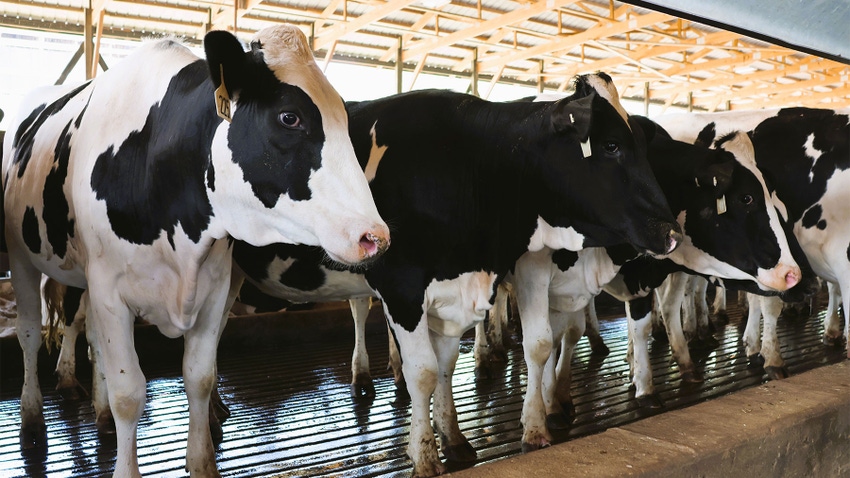
“We ask so much of our cows when they calve, and that transition period is such a challenge for them,” says Katie Bradley, Purina dairy research scientist. “There’s so much more we could do to support them at that time.”
Bradley says one of the biggest threats to overall animal health is a reduction in dry matter intake while energy requirements increase to support milk production.
“She’s milking and producing more milk and not consuming enough calories to cover that,” Bradley notes. “We want to help that cow get out of that negative energy time frame as quick as possible.”
Here are a few recommendations to help your transition dairy cows:
Encourage feed intake. Ultimately, negative energy balance can affect fresh cow milk production and potentially reproductive performance. Dairy producers should focus on management and nutrition to encourage intake in transition for cows.
“Typically, the transition period extends three weeks before and after calving,” says Matt Lippert, University of Wisconsin Extension dairy educator in Clark and Wood counties.
Lippert says the use of additives to alter the dietary cation-anion difference (DCAD) has been successful at reducing the prevalence of milk fever (insufficient blood calcium).
“Milk fever, ketosis, retained placenta, the incidence of one of these, even if subclinical, increases the likelihood of the others to happen. The problems cascade, and the effects carry on to later lactation,” he says.
Recently, other milk fever reduction methods, such as the use of a zeolite product to control phosphorus levels, have been shown to be effective in stabilizing blood calcium levels, Lippert says.
“DCAD and phosphorus binding differ in cost per day, and how many days the diet must be fed,” he explains. “These diets are very economical when compared to the costs associated with low blood calcium. It is very difficult to reduce low blood calcium at calving time with traditional diets, not using one of these programs.”
Larger herds have found it easier to feed transition diets to a group than is typical for smaller herds with tiestall management.
Avoid overstocking. Lippert says it is important not to overstock a transition cow pen.
“A week before calving, cows are going to cut back on what they eat, so they don’t need to also be competing for feed,” he explains. “Have enough capacity for all your transition cows to stay in the pen, not just on average but also when you have surges of fresh animals.”
After calving, if a fresh cow is cleaned, is eating well, looks healthy and has good numbers for beta-hydroxy-butyric acid (BHBA), Lippert says she may be able to leave the pen earlier after calving. “Healthy, well-adjusted animals leaving early is preferable to overcrowding.”
Checking temperature and borderline ketosis is a good way to confirm if cows are doing well.
If the pens and capacity are available, it is advantageous to separate springing heifers from older cows.
“One pre fresh pen for second-lactation cows and older, and one pen for springing heifers,” Lippert says. “Heifers have very little milk fever, but can be timid so they don’t justify the expense of a DCAD diet and may eat more if not intimidated by older animals.”
Increase energy intake. Identify additives or alternatives that either provide cows with more calories or promote the intake of more calories.
Bradley says antioxidants, polyphenols and beneficial metabolites provide the energy needed for a cow to produce milk.
Focus on animal husbandry. The University of Kentucky adds the following dairy management practices to help improve overall transition cow performance:
Do not house fresh cows with sick cows.
Maintain a clean environment in order to prevent mastitis.
Continue to minimize competition at the feed bunk by providing a minimum of 30 inches per cow.
The stocking rate should be near 80% in freestalls.
Corn silage-based diets should be supplemented with dry ground corn versus more fermentable starch sources such as barley, wheat or high-moisture earlage or corn.
Clean the feed bunk once a day.
Read more about:
NutritionAbout the Author(s)
You May Also Like








